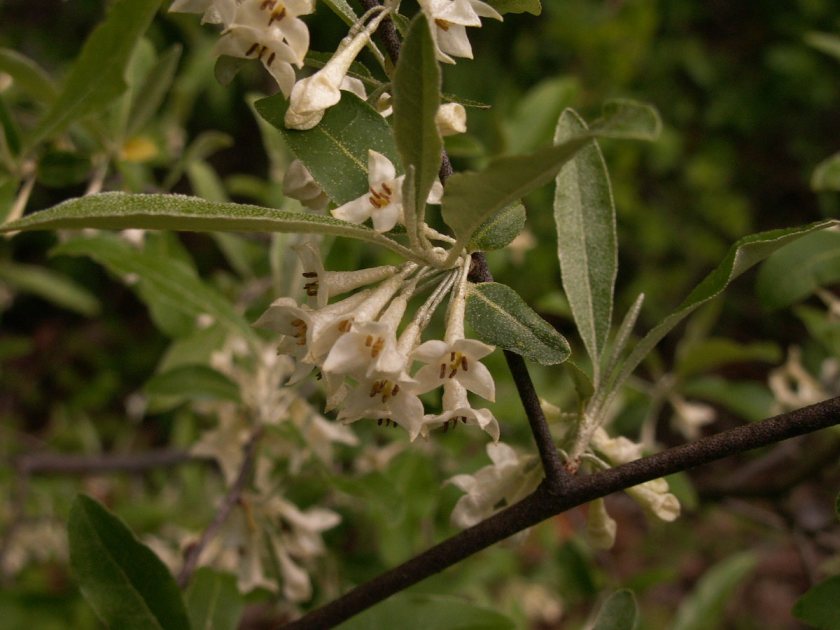A shrub or small tree, originally imported from eastern Asia as an ornamental, and now common to the point of invasiveness in some areas. This plant was growing along a country lane near Cranberry, where it was blooming in the middle of May.
This species seems not to have been established in the wild in Gray’s time, though there is a native species (E. commutata) farther north. In our area, this is the only species of Eleaeagnus, so Gray’s description of the genus is enough:
ELAEÁGNUS [Tourn.] L. Calyx cylindric-campanulate above the persistent cylindrical or globose base, the limb valvately 4-cleft, deciduous. Stamens 4, in the throat. Style linear, stigmatic on one side. Fruit drupe-like, with an ellipsoid 8-striate stone.— Leaves alternate, entire and petioled, and flowers axillary and pedicellate. (From elaia, the olive, and agnos, the Greek name of the Chaste-tree, Vitex Agnus-castus.)


Do you not also have Russian Olive (eleagnus angustifolia)? It’s common here in Maryland, not so far south of you.
We do have Russian Olive, which commonly grows in damp areas, and is considered an invasive species. It’s a very attractive invasive species, which of course is how it got to be an invader in the first place.